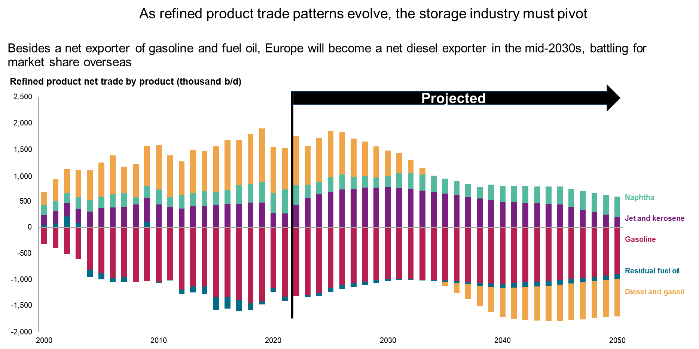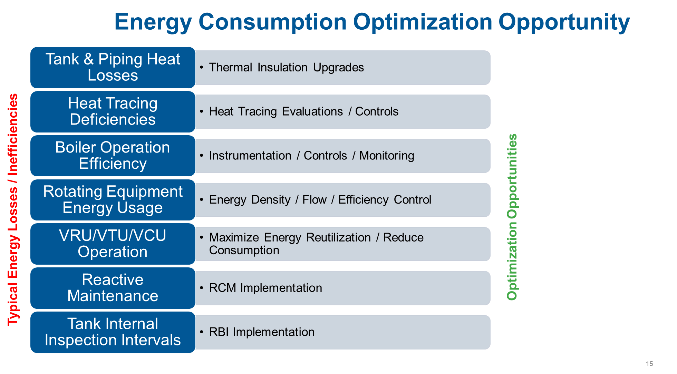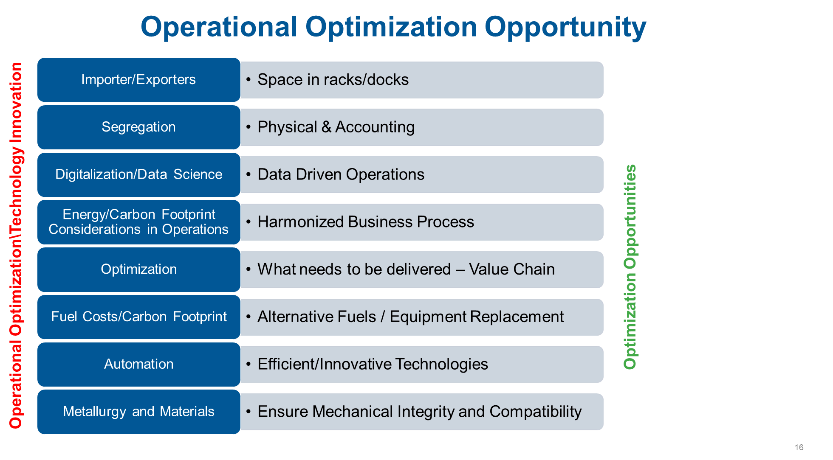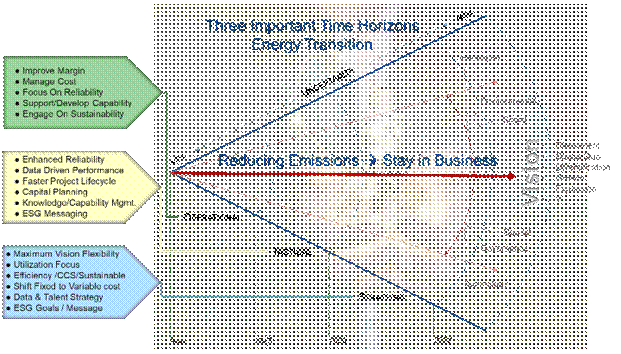Logistics: The “Forgotten” Link in the Energy Transition
By: Rafael Rengifo, Iván Parra Tepedino
Introduction
As the global energy landscape undergoes a profound emphasis on sustainability and reduced carbon emissions, the midstream sector finds itself at a pivotal crossroads. Like the rest of the energy sector, the midstreamers have come to accept the reality that environmental, social, and governmental (ESG) matters are now front-and-center concerns to an increasing number of investors and lenders. Traditionally serving as the unsung hero in the energy value chain, midstream operations are now faced with the challenge and opportunity of aligning with the goals of the energy transition while navigating through the complexities of regulations and the feasibility of decarbonization options. In this article, we delve into the role of midstream in the context of the energy transition and explore: (1) how the sector is affected, and (2) how it can contribute to a more sustainable future while trying to maintain economic viability, as midstreamers wean themselves off natural gas and hydrocarbon-based motor fuels.
The Midstream Sector: An Overview:
The midstream sector is a crucial link connecting the upstream (exploration and production) and downstream (refining and distribution) segments of the energy industry. This sector primarily involves the transportation, storage, and wholesale marketing of energy products, including crude oil, natural gas, and refined petroleum products. In today’s world, the challenge is that the hydrocarbon-based commodities and chemicals transported, stored and distributed are, by their very nature, prospective generators of carbon dioxide and other greenhouse gases that ESG regulations are targeting. Thus, midstream businesses need to be prepared to adapt to the new social, political and marketing landscape.
Key Challenges in the Energy Transition:
- Decarbonization Pressure: With global efforts to combat climate change, there is increasing pressure on all sectors to reduce carbon emissions. The midstream sector, traditionally associated with fossil fuel transport, faces the challenge of aligning its operations with decarbonization goals.
For many midstream companies, the answer — for now at least — is to focus on minimizing the release of methane, carbon dioxide (CO2), and other GHGs from their gas processing plants, pipelines, storage facilities, and fractionators, and on switching to renewables to power their operations.
The North American energy transition framework encompasses a broad range of policies, initiatives, and market dynamics aimed at reducing greenhouse gas emissions, promoting renewable energy adoption, enhancing energy efficiency, and fostering a transition to a more sustainable and resilient energy system. Key components of the energy transition framework in North America include Renewable Energy Development, Carbon Pricing Mechanisms, Energy Efficiency Programs, Clean Transportation Initiatives, Decarbonization of the Power Sector, Climate Policies and Targets, Research Innovation and Collaboration, and Resilience and Adaptation Strategies.
Examples in North America include California’s Low Carbon Fuel Standard Program (LCFS), 26 U.S. Code § 45Q Tax Credit, 26 U.S. Code § 30C Tax Credit and Federal Grants and Funding Programs.
The European Union (EU) has established a comprehensive framework to achieve its goal of becoming climate-neutral by 2050, emphasizing the reduction of greenhouse gas emissions and the promotion of sustainable practices. Key components of this framework include the EU Green Deal, Fit for 55 package, the EU Emissions Trading System (ETS), and the Renewable Energy Directive (RED).
- Shifting Energy Mix: As the world embraces renewable energy sources, the midstream sector must adapt to the changing dynamics of the energy mix. The transportation of renewable fuels, such as hydrogen and biofuels, is gaining prominence, requiring infrastructure adjustments.

- Technological Innovation: Embracing digitalization, automation, and other innovative technologies is crucial for optimizing midstream operations, improving efficiency, and minimizing environmental impacts.
- Consolidation Wave: U.S. Midstream sector comprises a good amount of specialized midsize firms and only a small group of large operators capable of wide geographic coverage. There are not too many private operators of scale left, as many were sold in the recent past, so further public consolidation is inevitable. U.S. midstreamers are in a position of strength as debt was cut and fee-based business models less exposed to commodity price swings were adopted. Mergers will result in more suppliers able to provide processing, transport, storage, and export services, according to executives and dealmakers.
Midstream’s Contribution to the Energy Transition:
- Investment in Renewable Infrastructure:
– The midstream sector can play a pivotal role in building the infrastructure necessary for the transportation and storage of renewable energy sources. This includes pipelines for hydrogen, renewable/biofuel terminals, and replacement of equipment and fuel sources. An often missed – and costly– point is that with the ESG systems and credits or validation, it is necessary to have segregation from source to blending.


- Carbon Capture and Storage (CCS):
– Implementing CCS technologies in midstream operations can help mitigate carbon emissions associated with fossil fuel transportation. This involves capturing CO2 emissions at the source and transporting them for secure storage.
- Enhanced Efficiency Through Technology:
– Leveraging advanced technologies, such as IoT sensors and data analytics, can optimize the transportation and storage of energy products. This not only improves operational efficiency but also reduces environmental impacts.
- Diversification of Energy Portfolios:
– Midstream companies can proactively diversify their energy portfolios by investing in low-carbon and renewable energy projects. This strategic shift allows for long-term sustainability and resilience in a changing energy landscape.
How can BECHT help in navigating the complexity?
Reducing GHG emissions across all scopes in midstream facilities is undoubtedly a complex challenge, and managing can be a complex and daunting task, but we’re here to provide guidance and make it more manageable. Collaborating with an experienced consulting firm like BECHT will help midstreamers navigate the complexities of GHG emissions.
At BECHT, we specialize in assisting midstream partners in achieving their emission reduction targets while remaining cost-competitive and supporting the EU’s emissions reduction goals. Our experienced consulting team can help navigate the complexities of GHG emissions by analyzing your current upstream, midstream, and downstream emissions, setting targeted reduction strategies and providing guidance on effective measurements and employing state-of-the-art solutions. Together with you, we will establish a thorough GHG-reduction goal and plan.

By partnering with BECHT, midstream clients can access our expertise and industry knowledge to implement sustainable practices and contribute to a more environmentally friendly future.

Our team of highly qualified consultants have hands-on experience working with our partners on a variety of projects addressing renewables and helping them navigate through very important issues. A sample portfolio includes:
- Terminal Emissions Reduction Strategies
- Terminal Energy Optimization and Data Science Utilization to Develop a Holistic Energy Reduction Pathway
- Carbon Capture, Sequestration, Utilization
- Development of Comprehensive Renewable Fuels Strategy, including Comprehensive Logistics Evaluation
- Evaluation of Logistics for Renewables/Bio-Fuels Facilities such as: Metallurgy, Heating, Blanketing, Water Management, Risk of Biological Degradations (odors), Rail, barge and Truck Rack Issues for Segregation (Physical and Accounting), and Jetty/Berth Utilization.
Don’t let the challenges of GHG emissions hold your facility back. Contact BECHT today and let us help you navigate the complexities, optimize your emissions management, and create a more sustainable and competitive future.
Conclusion:
The midstream sector’s adaptability and proactive involvement in the energy transition are essential for achieving global sustainability goals. By embracing innovation, investing in renewable infrastructure, and committing to carbon reduction strategies, midstream companies can not only remain relevant but also become key facilitators of a more sustainable and resilient energy future. As the world transitions towards cleaner energy, the midstream sector’s evolution will be instrumental in shaping a greener and more sustainable planet.
